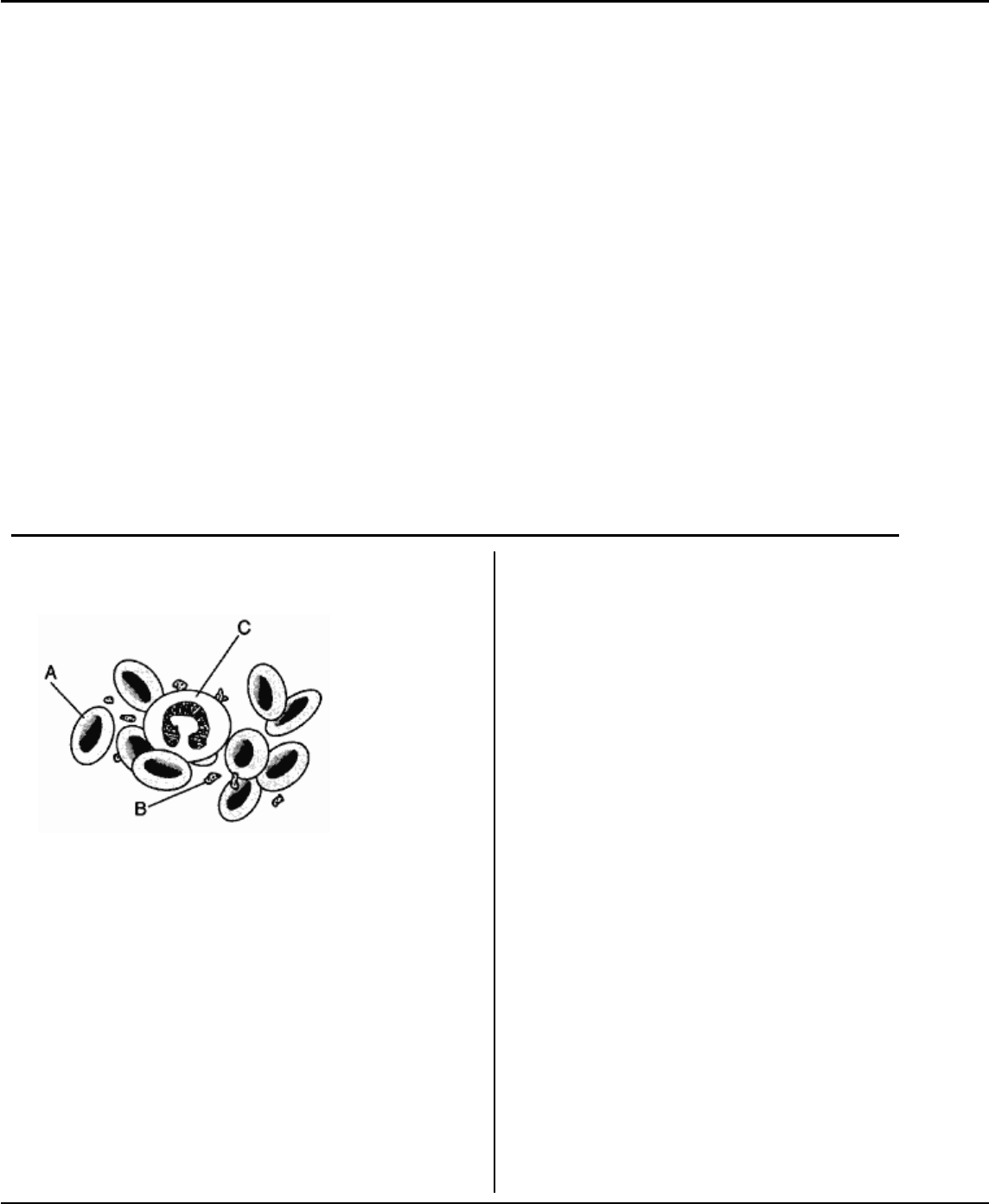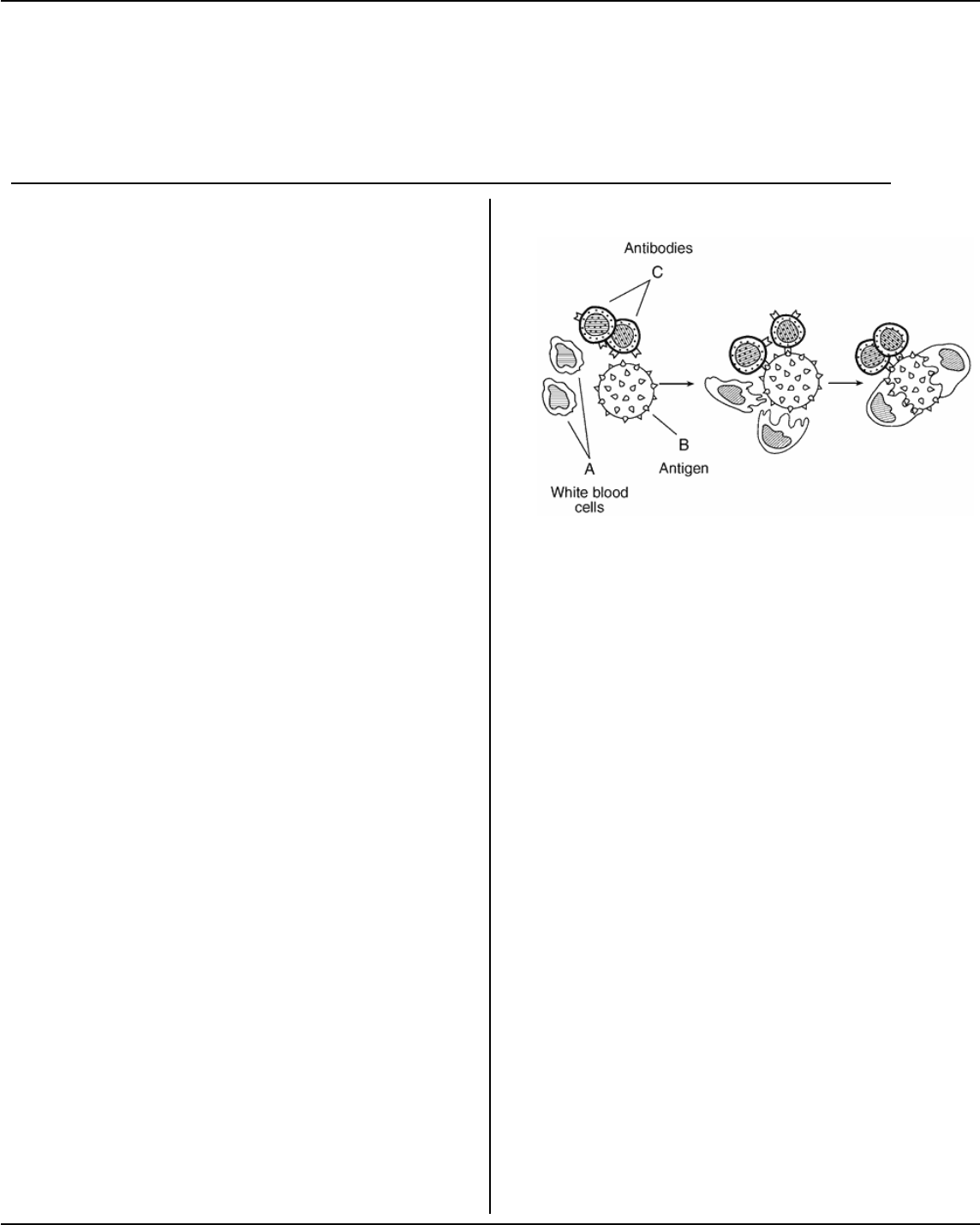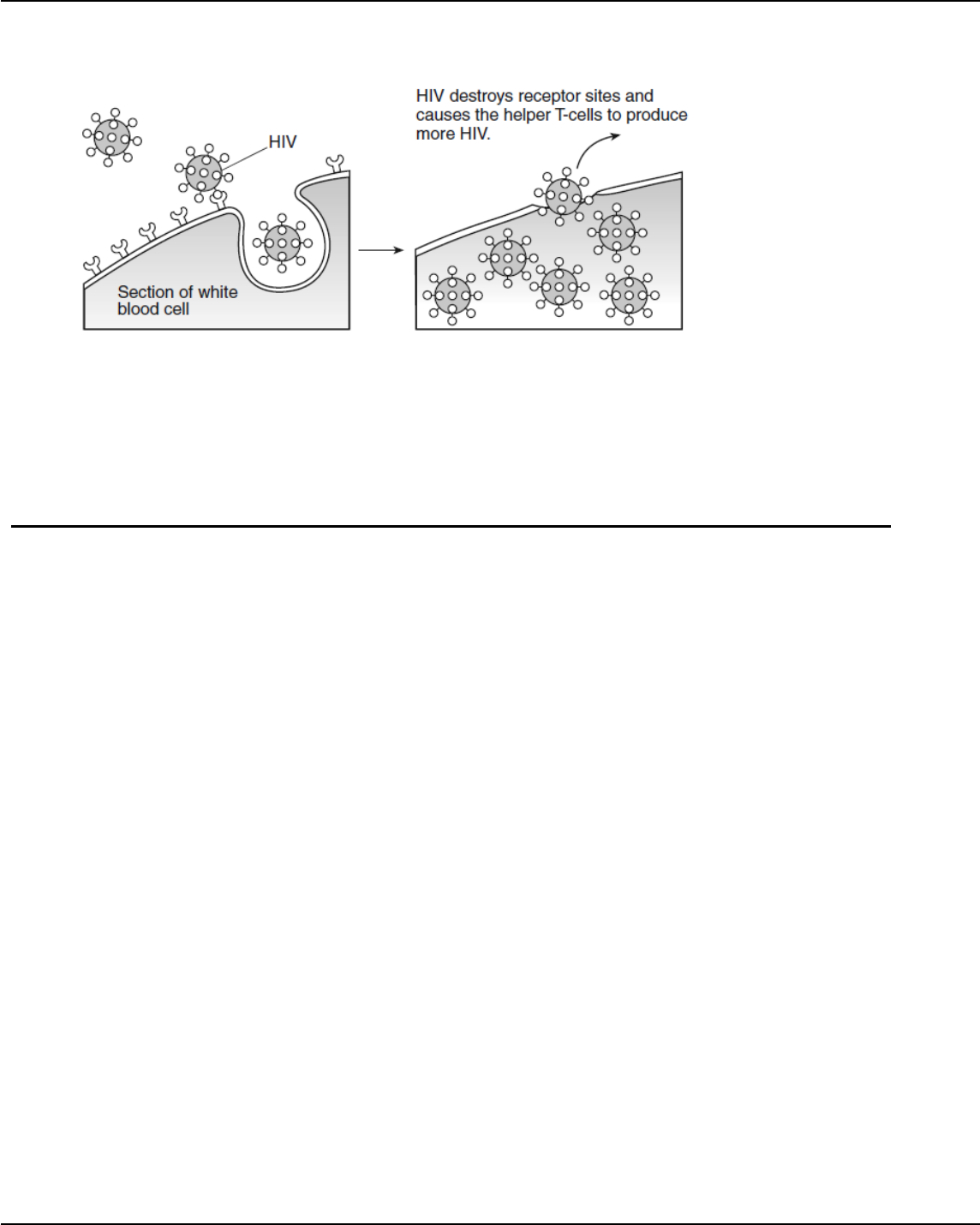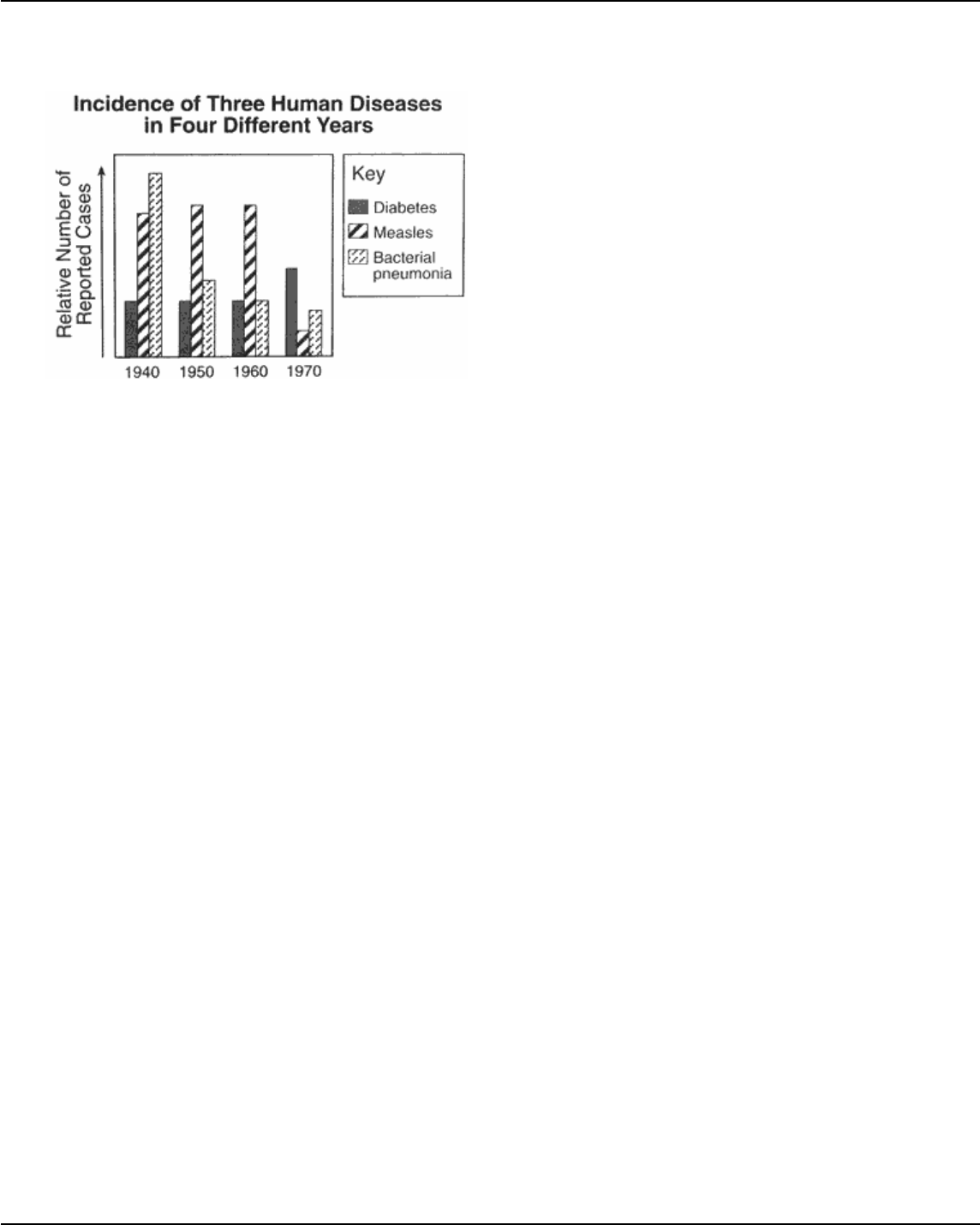
1.Base your answer to the following question on the reading passage below and on your knowledge of
biology.
Polio Vaccines
Polio is a disease that results in the destruction of nerve cells. The first vaccine against polio
was developed by Jonas Salk and was made from polio viruses that were killed using the chemical
formalin. In 1953, Salk tested the vaccine on himself, his wife, and his three sons. The vaccine was
found to be safe and seemed to work. In 1954, more than 1.8 million schoolchildren were part of a
trial to test the vaccine, and in April 1955, the vaccine was declared to be safe and effective.
Albert Sabin also developed a vaccine against polio. The vaccine developed by Sabin was made
from weakened polio viruses. While the Salk vaccine had to be injected, the Sabin vaccine was
administered orally on a cube of sugar.
Both vaccines were found to be effective in protecting people against polio because these
vaccines stimulate immune responses involving antibody production. However, the Sabin vaccine
is effective over a longer period of time and is easier to administer. Together, these vaccines have
nearly eliminated polio in many parts of the world.
A)Dead viruses are injected.B)Antibodies are injected.
C)Antibodies are administered orally.D)Sugar cubes are administered orally.
Which statement about the Salk vaccine is correct?
A)Both A and B function in immune responses, and
C transports oxygen.
B)A, B, and C are able to synthesize hemoglobin.
C)Both B and C provide immunity, and A
transports nutrients.
D)A transports oxygen, B initiates clots, and C
functions in immune responses.
2.Which statement correctly describes the activities of
the components of human blood shown in the
diagram below?
A)histamines produced as a result of an immune
reaction
B)antigens produced as a result of passive
immunity
C)phagocytosis, resulting in the destruction of body
cells
D)an increase in the number of platelets
3.A person with allergies may develop a rash and
swollen eyes when exposed to certain substances.
These symptoms are a reaction to
A)destroys cancerous cells
B)damages the immune system
C)increases the rate of antibody production
D)increases the rate of microbe destruction
4.A person with AIDS is likely to develop infectious
diseases because the virus that causes AIDS
A)It always produces antibiotics.
B)It usually involves the recognition and
destruction of pathogens.
C)It stimulates asexual reproduction and resistance
in pathogens.
D)It releases red blood cells that destroy parasites.
5.Which statement best describes an immune response?

Base your answers to questions 6 through 9 on the information below.
Organ Transplants of the Future
While most people take good health for granted, thousands of others desperately need to
replace a failing organ with one that is healthy. Most healthy organs come from people who
agreed to donate them upon their death, although it is possible to remove some tissue and organs
(such as kidneys and bone marrow) from living donors. Unfortunately, organs for transplant are in
short supply. As of 1992, over 22,000 Americans were waiting for a transplant.
Although increasingly common, transplants are risky procedures. During the operation, veins
and arteries must be blocked to prevent blood loss. This deprives parts of the body of oxygen and
nutrients and may result in permanent damage. In addition, the body may recognize the
transplanted organ as foreign and mount an immune response in which specialized white blood
cells (T cells) attack the transplanted organ.
Drugs called immunosuppressants are given to transplant patients to prevent their immune
system from rejecting the transplanted organ. However, these drugs weaken the ability of the body
to fight disease and leave the patient less able to fight infection.
Scientists are exploring new technology for producing transplant tissues and organs.
Unspecialized cells called stem cells are removed from the patient and then grown in a laboratory.
Treating stem cells with the appropriate chemicals causes them to differentiate into various
specialized tissues. In the future, scientists hope to develop chemical treatments that will cause
stem cells to grow into complete organs needed for transplants. Transplants produced by this
process would not be foreign material and, therefore, would not be rejected by the immune system
of the patient.
6.Explain why a transplant might be dangerous to the health of a patient.
7.State one reason that transplant patients might take an immunosuppressant drug.
8.State one specific disadvantage of taking an immunosuppressant drug.
9.Explain why doctors would consider using tissues or organs that have been grown from
stem cells.
A)active immunity
B)passive immunity
C)an oral vaccine
D)a phagocytic activity
10.Newborn infants nursing from their mother receive
milk containing antibodies against diseases to which
the mother is immune. The infants, however, remain
immune to those diseases for only a short time. This
situation is an example of

11.Base your answer to the following question on the information below and on your knowledge of
biology.
Children must be vaccinated against certain diseases before they can enter school. Some
parents feel that vaccinations are dangerous.
Explain to these parents what a vaccine is and what it does in the body.
A)fluB)AIDS
C)chicken poxD)pneumonia
12.Which disease damages the human immune system,
leaving the body open to certain infectious agents?
A)an allergic reaction
B)a form of cancer
C)an insulin imbalance
D)a mutation
13.In some individuals, the immune system attacks
substances such as grass pollen that are usually
harmless, resulting in
A)weakens their immune systems
B)produces antibodies in their blood
C)attacks muscle tissue
D)kills pathogens
14.People with AIDS are unable to fight multiple
infections because the virus that causes AIDS
A)the action of circulating hormones
B)a low blood sugar level
C)immune responses to usually harmless
substances
D)the shape of red blood cells
15.Allergic reactions are most closely associated with
A)antibodies
B)enzymes
C)mutated genes
D)weakened microbes
16.Many vaccinations stimulate the immune system by
exposing it to
A)antigensB)enzymes
C)fatsD)cytoplasm
17.Certain microbes, foreign tissues, and some
cancerous cells can cause immune responses in the
human body because all three contain
A)A, onlyB)A and C, only
C)B and C, onlyD)A, B, and C
18.The diagram below represents one possible immune
response that can occur in the human body.
The structures that are part of the immune system
are represented by

19.Base your answer to the following question on the information below and on your knowledge of
biology.
Cells of the immune system and the endocrine system of the human body contribute to the
maintenance of homeostasis. The methods and materials these two systems use as they carry out
this critical function are different.
State two ways cells of the immune system fight disease.
A)The transplanted skin is damaged, making the
immune system nonfunctional.
B)The antigens of the replacement skin are the
same as those of the damaged skin.
C)Burn victims lose so much blood that white
blood cells cannot cause an immune response.
D)There is no blood supply to the skin, so mixing
of antigens does not occur.
20.To replace burned skin, doctors can successfully
transplant replacement skin taken from another part
of the body of the burn victim. Which statement best
explains why the transplanted skin is not rejected?
21.Base your answer to the following question on the question below and on your knowledge of biology.
Describe how a flu vaccine protects the human body.
State how the human immune system reacts to the vaccine.

Base your answers to questions 22 through 24 on the information below and on your knowledge of
biology.
Beware of Dust Mites
Quietly lurking within our mattresses, under our beds, and inside sofas and carpets are
creatures too small to be seen without a microscope. Dust mites are arthropods closely related to
spiders, scorpions, and ticks. They feed on the dead skin cells regularly shed by humans and their
animal pets. The average human sheds about 10 grams of dead skin a week. Cats and dogs create
even more dander for dust mites to eat. The mites also eat pollen, fungi, and bacteria. They do not
drink water but absorb it from the air.
Dust mites do not carry diseases and are harmless to most people. It's their bathroom habits
that make some of us itch and sneeze. Many people develop severe allergies to dust mite feces
(wastes). If you lie on a rug where dust mites live, you might develop itchy red bumps on your
skin. Breathe in dust containing their feces and you might have more serious symptoms, such as
difficulty breathing or a severe asthma attack.
Dust mites thrive in warm, humid environments - eating and nesting in dust-collecting bedding,
fabric, and carpet. Think about this! A typical mattress can contain anywhere from 100,000 to 10
million dust mites. Nearly 100,000 dust mites can live in one square yard of carpet.
During a process called sensitization, a person's immune system mistakenly identifies the
inhaled dust mite waste as an invader. The next time the person is exposed to the dust mite waste,
the immune system launches an allergic reaction.
A)specialized chemicals that mark dust mite waste for destruction
B)viruses that combat dust mites
C)white blood cells that attack human skin cells
D)white blood cells that attack the skin cells of cats and dogs
22.The immune system of an individual who is allergic to dust mite waste produces
A)does not respond to pathogens
B)maintains homeostasis
C)responds to usually harmless environmental substances
D)undergoes rapid, uncontrolled cell division
23.An allergic reaction occurs when the immune system

24.State one way, other than using a pesticide, that an individual could decrease the number of dust
mites present in his home.
25.Base your answer to the following question on the information below and on your knowledge of
biology.
In order to enroll in most schools, students must be vaccinated against certain viral diseases, such as
mumps. Even with these vaccinations, many students still suffer from other diseases. Discuss how a
vaccination works and why some students still become infected with other diseases. In your answer,
be sure to:
Identify what is present in a vaccine that stimulates an immune response
A)targets many body systems
B)mutates, releasing toxins directly into the
bloodstream
C)increases the rate of enzyme activity in
different types of body cells
D)damages the immune system
26.People who have AIDS are more likely than others
to become ill with multiple infections because the
pathogen that causes AIDS
A)antigen production
B)chromosomal mutations
C)pathogens
D)allergies
27.Responses of the immune system to usually harmless
environmental substances are known as

A)Immune responses of an infected individual will be weakened.
B)The red blood cells of a person infected with AIDS will no longer be able to make antibodies.
C)This virus will strengthen future immune responses against blood-related diseases.
D)Immune responses will prevent the spread of AIDS in humans.
28.The diagram below represents how HIV, the virus that causes AIDS, interacts with a certain type of
white blood cell called a helper T-cell.
What is one possible result of the cellular activity represented in the diagram?
A)recognized an antigen in peanut butter and
produced antibiotics against it
B)digested the white blood cells that can
recognize an antigen in peanut butter
C)did not recognize an antigen in peanut butter
and could not produce antibodies against it
D)recognized an antigen in peanut butter and
produced an immune response
29.A 6-year-old child ate a peanut butter sandwich at
snack time in school. Five minutes later, her throat
became swollen and she collapsed. This allergic
reaction occurred because her body
Base your answers to questions 30 and 31 on the statement below.
The immune system protects against foreign substances and even some cancers. Explain how
the immune system functions.
30.Identify one way the immune system fights pathogens.
31.Describe the response of the immune system to the vaccine.

32.Base your answer to the following question on the
graph below.
A)As a result of genetic engineering, humans
became immune to the bacteria.
B)Antibiotics were made available for the
treatment of bacterial infections.
C)The bacteria did not respond to medical
treatments.
D)As a result of sexual reproduction, the bacteria
evolved into a harmless form.
Which statement provides the best possible reason
for the decrease in number of cases of bacterial
pneumonia from 1940 to 1970?
A)releasing hormones that break down these
chemicals
B)synthesizing antibodies that mark these
organisms to be destroyed
C)secreting antibiotics that attach to these
organisms
D)altering a DNA sequence in these organisms
33.The immune system of humans may respond to
chemicals on the surface of an invading organism by

Answer Key
Immune System
1.A
2.D
3.A
4.B
5.B
6.– Veins and arteries
may be blocked and
tissue damage may
result.
– The body may
reject the new organ.
7.To prevent rejection
of a transplanted
organ.
8.– The drug might
weaken the ability of
the body to fight
diseases.
– The drug may
leave the patient less
able to fight
infection.
9.– The organs would
not be rejected.
– Organs produced
by this process
would not be foreign
material and would
not be attacked by
the patient's immune
system.
10.B
11.Examples: – A
vaccine contains
weakened microbes
or parts of microbes
that stimulate the
immune system to
produce antibodies.
– Vaccines contain
the source of the
disease in a dead or
weakened form.
When introduced
into the body, the
vaccine triggers the
body's immune
system to produce
antibodies that are
specific to the
source of the
disease.
12.B
13.A
14.A
15.C
16.D
17.A
18.B
19.Examples: — engulf
foreign substances
— produce
antibodies —
recognize
pathogens/antigens
20.B
21.— Antibodies are
produced against the
virus. — increase in
number of white
blood cells —
produces a primary
immune response —
It builds up
immunity.
22.A
23.C
24.– do not have a cat
or dog – lower the
amount of moisture
in the air in the
home – do not have
carpet on the floor –
vacuum often –
clean or remove dust
often – wash
bedding frequently
25.– dead/weakened
virus/germ –
antigens – small
pieces of the
virus/viral coat
26.D
27.D
28.A
29.D
30.– White blood cells
engulf pathogens. –
Antibodies fight
invaders. – produces
antibodies
31.– The vaccine
stimulates the
immune system to
produce antibodies.
– It causes the body
to make antibodies.
32.B
33.B
